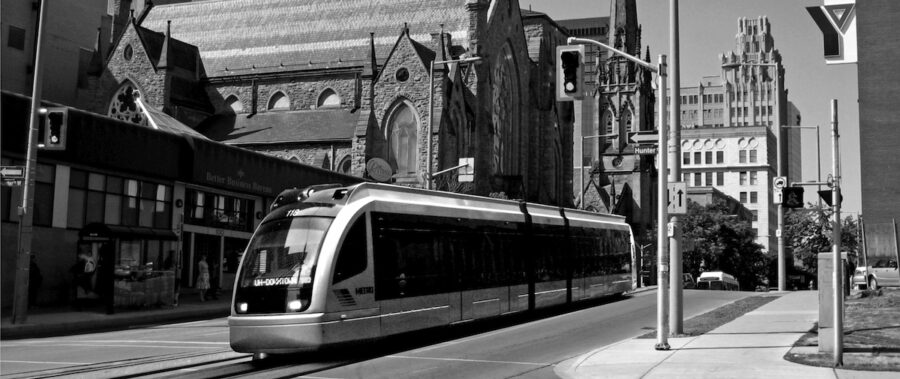
City of opportunity
- Dev Team
- 01 Aug 2011
By Keanin Loomis
I was told by someone I dearly adore in the administration at McMaster University that if I mentioned the University of Waterloo among some of her colleagues, I would elicit immediate ire. Apparently, the “W-word”, as she put it, is verboten on campus.
Not being in academia, I don’t truly understand the reason for the rivalry, but it probably has something to do with Waterloo’s much-heralded success in driving commercial, as opposed to research, activity. It’s a different academic philosophy that is getting a lot of political attention in our job-starved society.
The University of Waterloo has done a lot for the Region of Waterloo. In fact, it is Waterloo. UW is the reason that the most successful technology cluster in Canada exists just up the road from us. It created a culture that spawned Research In Motion and Open Text and countless other successes that have added tens of thousands of jobs to our economy. It’s an elite trade school for the knowledge economy, and it can’t be anything but good for Canada.
McMaster is a world-class institution that emanated from different circumstances and traditional pedagogy. The benefits to Hamilton over the course of its existence have been enormous and the economic impact to the community is immeasurable.
The research activity happening right here, right now is breathtaking and impacts the globe. This is a parallel success to the commercial activity that Waterloo has generated. Both strengthen our regional economies.
But, politicians, being judged as they are on unemployment rates and economic output, are looking to duplicate the success of technology clusters like that found in Waterloo. Premier McGuinty’s government, with the recent launch of the Ontario Network of Excellence (ONE), is hoping that this homegrown best practice can be transported to other population centres across the province, including here in Hamilton.
ONE employs Regional Innovation Centres (in Hamilton’s case, Innovation Factory, where I am employed) to help small and medium technology enterprises leverage Ontario’s institutional, governmental and private sector resources to create more jobs.
Though McMaster’s orientation might be different than UW’s, the institution will be critical to the success of this innovative public policy initiative here in Hamilton. Along with Mohawk, which is transforming itself in an impressive fashion, McMaster has so much to offer local innovators.
Newly minted McMaster President, Patrick Deane, has focused intently on integrating Mac more broadly into the community, and this is where I get truly excited about Hamilton’s future. If energies wasted on resentment could be channeled into a healthy sense of competition, McMaster’s involvement in Hamilton’s rebirth could be profoundly more transformative than UW’s impact on the City of Waterloo.
That’s becausem in my opinion, Hamilton is a better city in which to work, live and play than Waterloo. I have nothing against Waterloo. In fact, I spent six years of my life there and graduated from the finest institution in Canada (sorry Mac, alumnus loyalties will always trump). I had a ton of fun there, and my memories are fond. But once I graduated, I had no use for the city.
Ten years later, and despite all of the astounding growth and changes that have occurred, it’s still too small, too boring, too land-locked, too Four-Oh-Oned. There probably aren’t too many people that live there that would disagree, and many would say that it suits them just fine.
However, among young professionals in particular – those that are driving innovation in that community – they’re there because they have to be. Sure many of them would rather be in Toronto, but I believe that most of them could be persuaded to view Hamilton as the City of Opportunity. Especially the Future Hamilton that so many of us dream of.
For now, we have to take stock of our advantages and then figure out what we need to attract these people.
Surely low rents are be attractive. That’s our greatest asset and, for a small or medium sized enterprises and their Ramen-fed employees, it decreases financial anxiety and encourages risk taking. A large clientele base is key. The KW market is dwarfed by the Greater Toronto and Hamilton Area. Other large markets are easily accessed by land, air and sea.
A real city with established neighborhoods would meet the needs of the upwardly-mobile young urbanites that to propel the knowledge economy. We have those in spades.
World-class academic institution? Check.
Natural and architectural beauty? If only they could see the place!
Thriving creative community? They got in on the Hamilton secret years ago.
So what are we missing? Each of us have our own opinions, but many are nearly universally held: LRT, real political leadership, a willingness to dream big and take risks, business-friendly regulations, etc., all of which will lead to the biggest need of all: increased private investment.
Sure, it’s a long-term project, but it’s one worth embarking upon. A decade after having graduated from Waterloo, it scarcely looks the same today. The change in that small community has been astounding, but would be magnified in this city of over 500,000. With many of the necessary elements like McMaster in place, there’s no reason that Hamilton can’t duplicate and surpass Waterloo’s success.
Even with some recent turmoil, the tale of start-up success rising out of a Mennonite backwater has been tremendous. Bringing grandeur back to a Canadian urban masterpiece would be an even more remarkable story.
Keanin Loomis is the President and CEO of the Hamilton Chamber of Commerce, and is the former Chief Advocate at the Innovation Factory at McMaster Innovation Park. Keanin is an American-born reformed-lawyer who now lives in Hamilton with his wife Trish and two kids.
Comments 0
There are no comments


Add comment